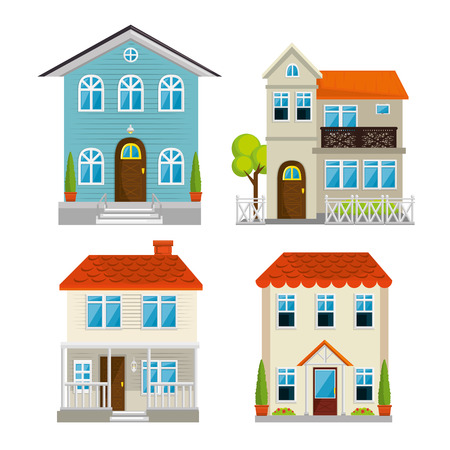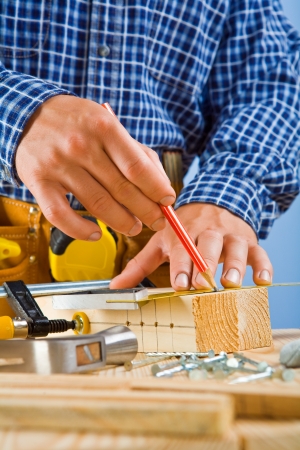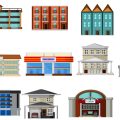Understanding Feng Shui and Its Benefits for Modern Homes
Feng Shui is an ancient Chinese practice that focuses on creating balance and positive energy, or “chi,” in our living spaces. While it has deep roots in Eastern culture, Feng Shui has become increasingly popular in the United States, especially for homeowners looking to renovate or redesign their homes. But what exactly is Feng Shui, and why does it matter for your next home renovation project?
What Is Feng Shui?
At its core, Feng Shui is about arranging your environment to promote well-being, comfort, and harmony. It’s not just about where you put your furniture—it’s about how the flow of energy can affect your health, happiness, and even success. In modern American homes, this means designing spaces that feel open, welcoming, and balanced.
Key Principles of Feng Shui
| Principle | Description | How It Applies to Home Renovations |
|---|---|---|
| The Five Elements | Wood, Fire, Earth, Metal, Water—each brings unique energy. | Choose materials and colors that represent each element for a balanced space. |
| The Bagua Map | A tool for mapping out different life areas in your home. | Use the bagua to guide room layouts and function assignments. |
| Chi (Energy) Flow | The movement of energy throughout your home. | Create clear pathways and avoid clutter to encourage positive chi. |
| Yin & Yang Balance | The concept of complementary forces—soft vs. strong, light vs. dark. | Mix textures, lighting, and shapes to create visual and energetic balance. |
Why Is Feng Shui Relevant in Today’s American Homes?
Today’s homeowners are seeking more than just stylish interiors—they want spaces that support their physical and mental well-being. With remote work becoming common and families spending more time at home, comfort and harmony have never been more important. Integrating Feng Shui into your renovation plans can help create:
- A calming atmosphere that reduces stress
- Functional layouts for easier living
- Healthy environments with better air flow and natural light
- Spaces that feel truly “yours” and reflect your goals
The Modern American Approach to Feng Shui
You don’t need to follow every traditional rule to benefit from Feng Shui. Many Americans adapt its principles to fit their lifestyle and personal taste. Whether you’re opening up a kitchen, rethinking your entryway, or choosing new colors for your walls, starting with smart design inspired by Feng Shui can lead to a happier, healthier home renovation experience.
2. Planning Your Renovation: Setting Intentions with Feng Shui
Before swinging a hammer or picking out paint colors, it’s important to get clear about what you want your home renovation to achieve. In Feng Shui, your intentions shape the energy of your space. Let’s walk through how you can align your renovation plans with both your personal goals and classic Feng Shui values—so every update supports the life you want to live.
Clarifying Your Goals
Start by thinking about why you’re renovating. Are you hoping for more peace and relaxation? Do you want to boost family harmony, support your career, or attract abundance? Write down your main reasons for the remodel. Here are some common goals and their Feng Shui connections:
| Goal | Feng Shui Focus | Design Intention Example |
|---|---|---|
| Improve Family Harmony | Living Room & Dining Area | Open layout, warm lighting, round dining table |
| Boost Career & Opportunities | Main Entry & Office | Clear entryway, organized office space, water element decor |
| Increase Health & Vitality | Kitchen & Bedroom | Natural materials, good air flow, clutter-free zones |
| Enhance Wealth & Prosperity | Southeast Corner (Wealth Area) | Add plants, keep area bright and tidy, use green and gold accents |
| Create Relaxation & Restfulness | Bedroom & Bathroom | Soft colors, minimal electronics, calming artwork |
Aligning Design Choices with Feng Shui Principles
Once your intentions are clear, it’s time to connect them with practical design decisions. Use these simple steps:
1. Map Out Your Home’s Energy Flow (Qi)
Walk through your home as if you’re a guest. Notice where energy might feel blocked (like narrow hallways or cluttered corners). Plan renovations that open up these areas to encourage positive energy movement.
2. Choose Materials and Colors Mindfully
Select materials that support your goals—for example, wood for growth and stability in living areas or soft textiles in bedrooms for comfort. Pick colors that match the mood you want to create: blues for calmness, reds for passion and motivation, greens for healing and renewal.
3. Prioritize Natural Light and Air Flow
A well-lit and well-ventilated home is essential in Feng Shui. When planning renovations, consider adding windows or skylights and using breezy curtains instead of heavy drapes.
4. Keep Entryways Clear and Inviting
The main entrance is called the “mouth of Qi” in Feng Shui—it’s where energy enters your home. Make sure this area is welcoming and free from clutter so positive energy can flow in easily.
Tying It All Together: Your Renovation Roadmap
Your renovation plan should now reflect both your personal desires and foundational Feng Shui concepts. By setting thoughtful intentions before any work begins, you’ll create a home that not only looks great but truly supports your wellbeing and aspirations every day.

3. Smart Layouts: Room Placement and Flow
When planning your home renovation, paying attention to room placement and layout is key for creating a space that feels harmonious and inviting. Feng Shui isn’t just about lucky objects or colors—it’s also about smart design that fits your lifestyle while optimizing energy flow, or “Chi.” Here are some practical strategies inspired by Feng Shui principles that you can easily apply during your renovation.
Room Placement: Setting the Right Foundation
Each room in your home has its own purpose and energy. Arranging them thoughtfully helps support a positive atmosphere. Here’s a quick guide to ideal placements:
| Room | Feng Shui Tip | Why It Matters |
|---|---|---|
| Main Bedroom | Place away from the front door and in a quiet area | Encourages restful sleep and privacy |
| Kitchen | Keep it visible but not directly facing the front door | Symbolizes abundance without letting good energy escape |
| Living Room | Central location with good light and open pathways | Promotes connection and welcoming vibes for family & guests |
| Home Office | Position with a clear view of the door but not directly in line with it | Boosts focus, authority, and productivity |
Optimizing Natural Light: Letting Energy Shine In
A well-lit home is a happy home in both Western design and Feng Shui. Maximize natural light by using large windows, glass doors, or skylights where possible. If you have limited sunlight, use mirrors strategically to reflect light into darker corners. Choose light, neutral wall colors to make rooms feel brighter and more open.
Simple Lighting Tips:
- Avoid blocking windows with bulky furniture.
- Add sheer curtains to let sunshine in while maintaining privacy.
- If renovating, consider open-plan layouts to allow light to travel through the space.
Smooth Energy Flow: Creating Open Pathways
The way you arrange furniture and pathways impacts how energy—or people—move through your home. Avoid cluttered hallways or having furniture block natural walkways between rooms. Aim for clear sight lines from one area to another so the whole house feels connected and easy to navigate.
Quick Feng Shui Flow Fixes:
- Arrange sofas and chairs so they don’t have their backs to doors.
- Create wide paths between key areas like the kitchen, living room, and entryway.
- Avoid sharp corners on furniture pointing toward seating areas; opt for rounded edges when possible.
- Keep entryways tidy—a clean front door area welcomes positive energy inside.
With these smart layout strategies inspired by Feng Shui, your home renovation can support both beauty and wellbeing from the ground up.
4. Materials, Colors, and Décor: Making Feng Shui Work in Your Style
When you’re renovating your home with Feng Shui principles in mind, choosing the right materials, colors, and décor can make a big difference—not just for energy flow, but also for creating a space that truly feels like home. Let’s explore how to blend classic Feng Shui guidance with American lifestyle and design trends.
Materials That Support Good Energy
Feng Shui values natural materials for their grounding and balancing properties. However, you don’t have to sacrifice style or practicality. Here are some popular options that work well in modern American homes:
| Material | Feng Shui Benefits | How to Use It Locally |
|---|---|---|
| Wood (oak, maple, bamboo) | Promotes growth, vitality, and warmth | Hardwood floors, open shelving, accent walls |
| Stone (granite, marble, slate) | Adds stability and grounding energy | Kitchen counters, fireplace surrounds, entryway floors |
| Metal (brushed nickel, copper, steel) | Brings clarity and precision to spaces | Lighting fixtures, cabinet handles, decorative accents |
| Cotton & Linen Fabrics | Enhances comfort and breathability | Sofas, curtains, throw pillows |
| Glass | Encourages transparency and flow of light | Tabletops, doors, vases or art pieces |
Selecting Colors with Intention—and Personality!
The right colors can uplift your mood and harmonize energy. In Feng Shui, colors represent the five elements (wood, fire, earth, metal, water). But don’t worry about following strict rules—choose shades that suit your taste and fit the vibe of your neighborhood.
| Element | Main Colors | Suits These Rooms Best | A Local Tip |
|---|---|---|---|
| Wood | Greens & Browns | Living rooms, dining areas | Add leafy plants or reclaimed wood furniture for an organic touch. |
| Fire | Reds & Oranges | Kitchens or accent walls in social spaces | Pops of color with artwork or area rugs keep things lively without overwhelming. |
| Earth | Yellows & Earthy Tones | Bedrooms or entryways | Soft golds or clay pots create a welcoming feel. |
| Metal | White & Gray Tones | Bathrooms or offices for focus and freshness. | Mixer of matte white paint and brushed metal hardware looks crisp and modern. |
| Water | Blues & Black Accents | Bathrooms or meditation spaces for calmness. | Navy towels or black-framed mirrors add depth without making it too dark. |
Your Décor: Blending Feng Shui With American Home Style
You don’t have to fill your home with Asian antiques to embrace Feng Shui. Instead:
- Create Flow: Arrange furniture so that there’s a clear path through each room. Avoid blocking doorways with bulky items—think “open sight lines.”
- Add Life: Healthy houseplants boost positive energy—try easy-care options like pothos or snake plant if you’re new to gardening.
- Select Art Mindfully: Choose images that inspire you—family photos in the hallway for warmth; peaceful landscapes in bedrooms for relaxation.
- Loved Objects Matter: Display meaningful keepsakes on open shelves or mantels. Sentimental value is powerful in creating good vibes at home.
Tying It All Together: Personal Touches Count
Your home should reflect who you are. By mixing Feng Shui principles with your favorite local styles—whether it’s farmhouse chic, coastal cool, urban industrial or traditional—you’ll create a space where good energy flows naturally and your personality shines through. Don’t be afraid to experiment until it feels just right!
5. Bringing It All Together: Common Renovation Pitfalls and Feng Shui Solutions
Renovating your home is exciting, but even the most well-intentioned updates can unintentionally create stress or imbalance if you overlook important Feng Shui principles. Let’s highlight some of the most common renovation mistakes homeowners make—and see how Feng Shui-inspired solutions can help you craft a space that feels harmonious, welcoming, and truly “at home” in American life.
Typical Renovation Mistakes and Feng Shui Fixes
| Mistake | How It Happens | Feng Shui Solution |
|---|---|---|
| Poor Front Entry Design | Cluttered porches, blocked doors, or dark entryways send a negative first impression and restrict energy flow. | Keep your front entrance tidy and well-lit. Add a welcome mat and plants to invite positive energy (chi) into your home. |
| Ignoring Room Flow | Placing furniture haphazardly or creating cramped walkways makes moving around difficult and disrupts harmony. | Arrange furniture so there’s clear movement between spaces. Avoid blocking pathways and allow energy to circulate freely. |
| Lack of Natural Light | Heavy curtains, small windows, or poor lighting choices make rooms feel closed-in and gloomy. | Maximize sunlight by choosing light window treatments or adding mirrors. Use layered lighting for warmth and brightness. |
| Overcrowded Spaces | Packing too much furniture or décor creates clutter and overwhelms the senses. | Edit belongings regularly. Choose quality over quantity for furnishings. Leave open spaces for chi to move smoothly. |
| Imbalanced Color Choices | Selecting all dark or overly bright colors can cause mood swings or discomfort. | Use a balanced color palette inspired by nature—earthy tones, soft blues, greens—to promote relaxation and balance. |
| Ignoring Kitchen Placement | Kitchens facing the front door or placed directly opposite bathrooms can disrupt family harmony and well-being. | If possible, position the kitchen away from the front door. Use screens or room dividers to separate kitchens from bathrooms. |
The American Home & Feng Shui Harmony
American homes come in all shapes and sizes—from cozy apartments to spacious suburban houses. No matter where you live, blending Feng Shui with local design tastes is easier than you think. For example:
- Create Inviting Social Spaces: Open-plan living areas are great for gatherings, but be sure to define zones with rugs or furniture arrangements so energy doesn’t feel scattered.
- Personalize with Meaningful Décor: Display family photos or travel mementos thoughtfully; avoid overcrowding shelves to let each piece shine and support positive memories.
- Stay Practical: While water features like fountains are popular in Feng Shui, choose styles that suit your climate and lifestyle—perhaps a small tabletop fountain instead of a large outdoor pond.
A Few More Simple Tips
- Smooth Transitions: Use area rugs, plants, or paint colors to gently transition between rooms without abrupt changes in style or mood.
- Clever Storage: Keep closets organized and out-of-season items tucked away to minimize everyday clutter.
- Breathe Easy: Incorporate air-purifying plants like snake plant or peace lily for fresh energy indoors.
Your Home’s Energy Matters
The right renovation choices do more than just look good—they help everyone who enters your home feel relaxed, welcomed, and comfortable. With mindful attention to these common pitfalls and practical Feng Shui solutions, you’ll create an environment that supports both modern American living and timeless harmony.


